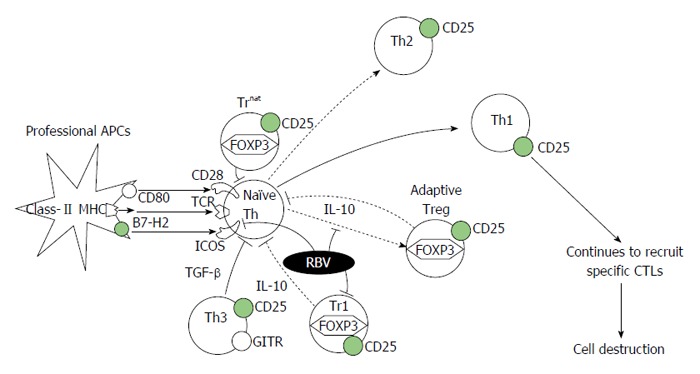Figure 1.

Schema of the potential mechanism of action of ribavirin on T-regulatory cells in the T helper 1/2-regulatory cascade. RBV interferes with FOXP3 expression in naïve Th cells, making them unable to differentiate into adaptive Treg cells. RBV also disrupts the inhibitory activities of adaptive Treg and Treg 1 cells by suppressing their IL-10 production. In addition, RBV down-modulates ICOS, expressed on naïve Th cells after stimulation, to inhibit the differentiation of naïve Th cells in to Th2 cells. The combination of these affects may contribute to maintain Th1 activity against exogenous antigens, which would contribute to the elimination of HCV-infected cells via the activation of specific CTLs. RBV: Ribavirin; ICOS: Inducible co-stimulator; IL: Interleukin; HCV: Hepatitis C virus; CTL: Cytotoxic T cell; FOXP3: Forkhead box-P3; Treg: T-regulatory; Th: T helper; TGF: Tumor growth factor; MHC: Major histocompatibility complex; TCR: T cell receptor; GITR: Glucocorticoid-induced tumour-necrosis-factor-receptor-related protein; APC: Antigen presenting cells.
